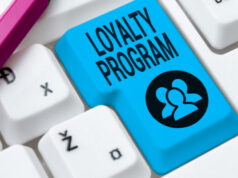Are you searching for the latest management systems, techniques, and strategies for the 2020s? It makes sense to pursue cutting-edge approaches because so much has changed in the past decade. Owners and entrepreneurs have access to a wide array of inventory control methods, transport fleet software, motivational tactics, and more.
The beauty of managing in the modern era is that there are dozens of tools to choose from. Whether your organization is small, large, new, or old, you have the power to select the best mix of managerial processes and implement them in any way you wish. Among the most popular choices are tax planning software products that can turn a tedious chore into a relatively simple procedure, customer satisfaction programs, virtual meetings, competition analysis based on AI (artificial intelligence), automated budgeting products, and more. Here are a few of the top choices for businesses of all sizes and in every field of endeavor.
Retail Inventory Control
A generation ago, inventory control was one of the most costly and time-consuming tasks for owners. With modern software programs, management can calculate critical figures like reorder points, cost of goods sold, accrued sales tax, and volume adjustments in a matter of seconds. Most retail inventory calculations are recorded after each sale, an unheard-of feat in the days of monthly physical counts and paper-based inventory operations. In the world of high-tech everything, businesses no longer have to devote so much time and effort to counting stored items and measuring the value of what’s in the warehouse.
Transport Fleet Systems

Transport companies face unique challenges. Not only do their customers entrust them with valuable goods, but managers must find a way to get those items from Point A to Point B in the most cost-efficient way possible. Security is of paramount importance. That’s just one reason it’s imperative for firms in this niche to use fleet tracking tools like GPS devices. There are Samsara’s offerings that include multiple kinds of tracking and related telematics programs. When properly deployed, fleet tools like these help keep tabs on fuel usage, engine performance, vehicle location, driver response, route changes, inclement weather, and other key parameters.
Motivation
Motivational strategies have gone through plenty of changes in the recent past. In the 2020s, new hires are discovering that supervisors have a lot more to offer than a per-hour pay rate or an annual salary. Packages of salary enhancement offerings are part of the new compensation system. How do businesses motivate employees in the modern era? In addition to salaries and wages, a few of the top methods in current use include gym memberships, health insurance, paid time off, specific career paths, free training, tuition reimbursement, public transportation vouchers, the option to work from home, and lenient vacation policies.
Tax Planning
There are two ways for organizations to approach the unavoidable chore of tax planning. They can do it all in-house or outsource the job. For those who choose the former, there are several excellent taxation software packages to choose from. Any manager, whether a trained accountant or not, can install, set up, and use the top products in the taxation niche to get the job done. Programs and apps have sprung up in every field and every part of company operations, so it’s not unusual to see managerial level workers using sophisticated tax products to deal with a central component of everyday operations, namely keeping tabs on taxes owed, paid, and accrued at any given time.
Customer Satisfaction

Monitoring and dealing with customer attitudes is one of the most critical jobs for employees at any level of a business. Modern management personnel use several techniques for taking on the challenge. Not only do they leverage the power of CRM (customer relationship management) programs, but they also oversee all communications between clients and the organization. Some organizations outsource this job and hire specialists to deal with disgruntled buyers on social media, clean up reputation problems, track buying habits of current clients, respond to inquiries promptly, and analyze numerous data parameters about customer behavior.
Meetings
Smart owners know that workers don’t like to attend meetings. This is especially true for Monday morning staff gatherings that eat up time and start the week off on a down note. Instead, supervisors are implementing virtual meetings that take a fraction of the time of in-person sessions. That way, even staff members who work from home can take part, and the typical get together takes less than 15 minutes. The secret to making this approach work is for supervisory staff to prepare detailed meeting agendas well in advance. Once a session begins, it’s essential to move through the discussion points quickly and make sure that everyone has a chance to contribute. Online meeting software has changed the face of commercial enterprises in every industry.
Competition Analysis
Analyzing a competitors’ strengths and weaknesses used to be a time consuming, paper laden chore that only the most stalwart supervisors could accomplish. The latest software gets the job done with minimal human input, delivers useful reports, and leverages the power of AI to collect online data on competitors. Useful categories of information on competitors include news stories, pending legal cases, published sales figures, executive interviews, stock market performance, and high-profile scandals. In highly competitive industries, the way owners perform this essential task can make the difference between long-term success and closing the doors.
Budgeting

Methods of creating realistic, accurate budgets have been around for decades. The latest apps and other retail products offer corporate leaders the chance to crunch all the right numbers in a matter of minutes and avoid missing crucial details in the process. The most common managerial technique for budgeting is to use a combination of software and human created documents. Comparing traditional budgeting results to AI created spreadsheets can provide a full-scale view of how each department spends its allotted share of expense money. However, most organizations choose to use apps exclusively once the programs have proven to be reliable in creating budget forecasts and developing routine quarterly documents for tax filings and managerial reports.









